| Issue #101 • September/October, 2006 |
They’re prized by the world’s top chefs. They’re served in the most elegant restaurants. You’ll pay a pretty penny for them at farmers’ markets. Yet they’re abundant and often free for the taking in forests all over the world. Even a newcomer can gather them easily after only a few minutes instruction.
I’m talking about Chanterelle mushrooms. You can pluck these golden gems in the hills of California or the ancient wald of Germany. They grow in the steamy spring woods of Missouri and the foggy fall forests of the Pacific Northwest.
The Chanterelle is distinctive and beautiful. It’s a great target for novice mushroom hunters, because it’s both easy to identify and rewarding to the tongue. If you become a serious Chanterelle hunter, you might even make money from your gatherings.
|
What is a Chanterelle?
The Chanterelle is an edible fungus of the genus Cantharellus. There are many Chanterelle species, but the most common and easy to identify are C. cibarius (the yellow Chanterelle) and C. formosus (the Pacific Golden Chanterelle).
These two are so much alike that only recently did scientists decide the Pacific Golden was a separate species. (See photo captions for more about Chanterelle species.)
The Chanterelle is lovely to look at, delicate in flavor, and goes well with “lite” meats like chicken. It also makes excellent soups and appetizers. You can happily toss Chanterelles onto a fresh green salad or a pizza.
Taste a raw Chanterelle and initially you’ll perceive a firm, moist, fibrous texture, but merely a slight flavor. After a moment, though, your throat will feel “peppery”a sensation that might linger for several minutes. To me, the overall impression is almost radish-like, though the texture is softer.
When cooked, Chanterelles lose their pepperiness, but add a pleasantly delicate flavor and texture to any dish, from an omlette to a side of rice.
|
Where and when do you find them?
Chanterelles grow in a symbiotic relationship with living trees. They gather moisture and minerals to feed the trees, and in return, trees offer the mushrooms food in the form of photosynthesized carbohydrates.
Because of that intricate relationship, Chanterelles are almost impossible to cultivate and are not yet commercially grown (although researchers are trying).
In many parts of the world, including California and the mid-Atlantic coast, they grow around the base of oak trees. In the Pacific Northwest, they favor Douglas-fir and western hemlock forests. But wherever you seek them, you’ll always find them around the base of living trees.
They like mature trees. But my own personal best gathering ground has been in a 20- or 25-year-old tree farm that’s overdue for thinning. They love the darkness there, the undisturbed ground, and the lack of competition from greenery.
Chanterelles are a spring or early summer crop in the southeast and many parts of California. Look for them after rainstorms in late May or June. In the forests of Saskatchewan, Chanterelles may appear in the late spring and grow throughout the summer. In the Pacific Northwest, they’re a fall croppopping up after the rainy season arrives and sharing their bounty until the first frost.
What do you look for?
|
Before you hunt any mushrooms, know what you’re doing. If you’re new, go out with an experienced person the first time.
Also, know whether it’s okay to gather in a given area. In some parks, mushrooming might be forbidden. In other places, you might need a permit or an okay from a property owner. Where I live, you simply go out onto logging company lands and begin.
First, as you scan the forest floor, look for bright, wholesome gold or yellow dots near the bases of trees. Think of the most beautiful, classic golden retriever dog you’ve ever seen. That’s the color. (And these little goldens are well worth retrieving.)
The shape of a mature Chanterelle has been described as a funnel, a goblet, or a trumpet. It does not have a separate stem and cap, but a graceful, almost seamless curve in which the stem broadens and unfurls to become the cap.
They are so goblet-like that sometimes you’ll find a fully formed Chanterelle holding a shot-glass full of rainwater. Normally, though, the top splits as it unfurls, so water runs off. The edges of mature Chanterelles are also wavy or curvy.
|
Immature Chanterelles appear to have a round cap, but when you pluck them and examine the underside, you’ll see that it’s not a true cap, but simply hasn’t finished unfurling yet.
Chanterelles may be smaller than your thumb, or when full grown, as large as your fist. They have a matte surface. The underside reveals fine gills, either the same color as the cap or slightly lighter, that begin below the point where the outward curve starts. The gills, the spore-producing portion of the mushroom, may be pronounced, as in C. cibarius. Or they may be smoother, depending on the species and the growing conditions. Wet conditions tend to produce a more pronounced gill. Tear a Chanterelle open and the flesh inside is pure white, firm, and shreds easily.
Another sure identifier: Pluck a Chanterelle and hold it to your nose. The aroma is similar to that of an apricotthe stronger the aroma, the stronger the flavor.
How to tell Chanterelles from similar mushrooms
In general, a Chanterelle is not brown, weak yellow, white, or red. There are exceptions to this rule, definitely. But when first exploring the world of Chanterelles, think bright gold or yellow.
A Chanterelle is not slick or shiny. A Chanterelle does not have a pointy cap, extremely deep gills, a spindly stem, or a distinct, separate cap. A Chanterelle does not grow directly on wood (again, there are exceptions for some rare and distinct Chanterelle species, but our little “golden retrievers” grow only in moist forest soil).
The two most common Chanterelle look-alikes are the false Chanterellewhich won’t hurt you, but makes a disappointing dinnerand the Jack-O-Lantern. The Jack-O-Lantern will make you sick but won’t kill you. The Jack-O-Lantern is pretty easy to distinguish, though. Its cap is more brown, it has deeper gills, and it does grow directly on wood. It’s also bioluminescentthat is, it glows in the dark. A Chanterelle never glows in the dark.
Within 10 minutes of beginning my first Chanterelle hunt, I’d made a rule that’s never led me astray: If I have to ask myself, “Is that a Chanterelle?” then it’s not a Chanterelle. Real Chanterelles practically jump off the forest floor at you, once you know what to look for.
How to harvest
Harvesting is simple. Gently tug the mushroom out of the ground, rocking or twisting as necessary. Don’t cut a chanterelle out of the ground with a knife, as this may lead to infection in the remaining stem and might damage the hidden understructure on which the next crop of mushrooms will grow.
|
Feel free to take both mature examples and small ones (which many people find more tasty). But don’t over harvest. Leave some small mushrooms and leave the ground as undisturbed as possible. Nature will reward you with more mushrooms in the future.
Once you’ve captured your golden gem, use a sharp knife to slice off the end of its stem. Then leave the end in the woods.
Place your “catch” in a basket. Carrying in a woven basket is good for the mushrooms you’ve picked as it helps keep them from getting mushy. But it’s even better for future mushroom harvests. With each step you take, your basket sheds spores that might turn into future Chanterelle patches.
You can also tote your harvest in a paper bag lined with paper towels to absorb extra moisture. Real Chanterelle aficionados say never to use a plastic container. But in practice, people use plastic bags and buckets all the time. Just don’t keep your Chanterelles in plastic very long. Empty them onto a towel once you return home.
How to clean and store
Tend to your mushrooms as soon as you get them into your kitchen. If you’ve sliced off the stem ends while in the woods, your cleaning job will be relatively easy. Just lightly brush off the dirt and debris with a paper towel or soft cloth. You can also use a small brush to get dirt out of the gills and curves, but you’ll be scrubbing off the surface of the mushroom at the same time.
Don’t wash Chanterelles unless you absolutely mustand in that case it’s best to do it right before cooking.
To store fresh: Place them in a paper bag in the veggie-keeper compartment of your refrigerator. They’ll be good for 7-10 days.
To freeze: Most people prefer to saute their Chanterelles before freezing. Just place a tiny bit of oil or butter in the pan, quarter the mushrooms, and stir for a few minutes over medium heat. (Chanterelles have so much moisture that with just a starter drop of oil they’ll “dry saute” themselves in their own water.) You can freeze them in their cooking liquid, discard the liquid, or separate the liquid and use it in soups.
If you saute them with butter and onions before freezing, you have a ready-made appetizer or soup ingredient; just defrost, add wine or stock and spicesand voila!
You can freeze without sauteeing, as long as you do it in small, meal-sized containers. If you use large containers, the Chanterelles’ high moisture content will cause them to clump into one indivisible mass. HINT: Since chanterelles tend to get rubbery or mushy when preserved, freeze only young, firm specimens.
To can: I don’t like canned mushrooms, so here I’ll pass along the word of a third-party expert. According to the web site: Wild About Mushrooms (www.mssf.org/cookbook/chanterelle.html):
“To can Chanterelles, clean them thoroughly and cut them in big chunks and steam for 20 minutes. Place the pieces in small [sterilized] canning jars and cover them with the liquid from the steaming vessel or boiling water to make up the difference. Add ½ teaspoon salt and ½ teaspoon vinegar. Finally, sterilize them for 40 minutes in a pressure cooker at 10 pounds pressure.”
|
You can also pickle your Chanterelles using any standard pickle recipe, adjusting the seasonings to suit the very delicate flavor of the mushroom.
To dry: Quarter your Chanterelles and lay them in the open air. Cover lightly with cheesecloth if insects are a problem. Then store them in a lidless container that allows them to breathe a bit. When it’s time to serve, just soak in water for an hour or two. NOTE: Dried Chanterelles always retain a slightly leathery texture. Once dried, they might be suitable as an ingredient in a soup or stew, but not in a stand-alone mushroom dish.
A tip for dividing your Chanterelles: You can slice them with a knife, as you would any mushroom. But try this instead: Hold a Chanterelle by its top, push your thumbs into the center of the cap, and simply tear lengthwise. You can tear into pieces as large or as small as you need. Much easier and faster than slicing.
Chanterelles are extremely versatile. Here’s a sampling of very easy recipes.
Chanterelle casserole:
Serve this as a side dish or as a sauce over chicken or pasta.
1 pound Chanterelles, cut in halves or quarters
1 onion, chopped
¼ cup chicken broth
½ cup cream
salt and pepper to taste
Pre-heat oven to 350 degrees. Spread the mushrooms in the bottom of a baking dish. Spread the onions over them, cover the dish, and bake for 20 minutes. Remove from oven, stir, and add broth, cream, and seasonings. Bake another 15 minutes. Try not to boil the cream.
Serve garnished with fresh parsley. Serves 4.
Chanterelle and wild rice soup:
The textures of this soup are almost as good as the flavors.
|
1 Tbsp. olive oil
1 onion, finely chopped
1 pound Chanterelles, shredded
½ cup white wine
2 cups chicken or vegetable stock
1-½ cups evaporated milk
1 cup cooked wild rice (or blend of brown & wild rices)
ground black pepper to taste
Heat oil over medium heat. Add onions and mushrooms and saute. Gradually add wine. Add stock and bring to a boil. Reduce heat and simmer for 10 minutes. Add cooked rice, evaporated milk, and pepper, and simmer until heated through. Serves 4.
Beefless Chanterelle stroganoff:
Here’s a quick and easy recipe that will also let a preparedness buff use a few stored ingredients.
¾ cup beef-flavored TVP
1 medium onion (or equivalent in dried onion flakes)
3 cups Chanterelle slices
3 Tbsp. butter or oil
salt and pepper to taste
½ tsp. basil
a grating of nutmeg
¼ cup dry white wine
1 cup sour cream
Hydrate the TVP with boiling water and set aside. In a skillet, saute mushrooms and onion in butter. Add the salt, pepper, nutmeg, and basil. Drain any excess water from the TVP. Add the TVP to the mushroom/onion mix. When thoroughly heated, add the wine and sour cream. Heat until these final ingredients are warmed, then serve over green egg noodles. Serves 2-3.
Chanterelles and hazelnuts in Madeira:
As an appetizer, this adaptation of a recipe from a famous Northwest restaurant will dazzle your taste buds. Or you can ladle it over chicken or mix it with hearty rice blends.
5 Tbsp. butter
salt and pepper to taste
1 hearty dash of Tabasco sauce
1 tsp. Worcestershire sauce
1 tsp. green onions or dried onion flakes
1 Tbsp. minced garlic
2-3 Tbsp. hazelnuts (or pecans), finely chopped
2 cups Chanterelles, quartered
½ cup Madeira wine
On high heat, melt butter in a saucepan. While butter is melting, add salt and pepper, Tabasco, Worcestershire, onion, and garlic. Once this mixture is bubbling, saute the mushrooms and nuts. As the toasty aroma arises, gradually add the wine, still cooking on high. Cook a few more minutes until the sauce reduces slightly. Then serve garnished with fresh parsley. Serves 2.
Chanterelle salad:
Here’s a quick, light summer lunch or healthy starter dish.
Mix green leaf and red leaf lettuce in a bowl. Top with:
raw, quartered Chanterelles
raw, unsalted sunflower nuts
vine-ripened tomatoes, sliced
finely chopped slices of your favorite cheese
croutons or a sprinkling of Italian-flavored bread crumbs
Serve with oil & vinegar or a light vinaigrette dressing. Serves as many as you prepare for.


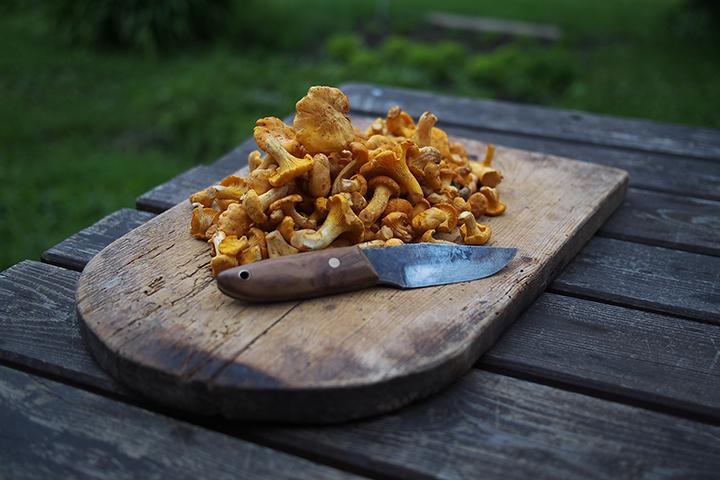






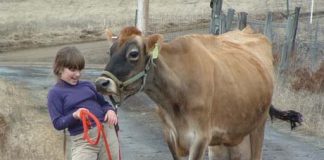
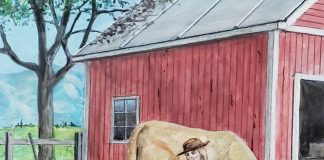





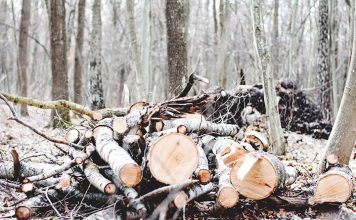


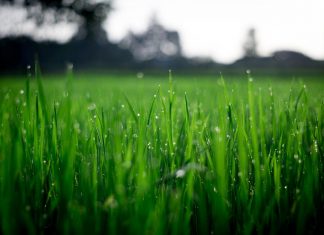
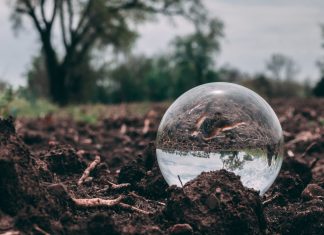
Hi Devon, Thank you for sharing with us this incredible information about Chanterelle and mushrooms and also thanks for telling us this Chanterelle and wild rice soup Recipe, I will also trying to make this delicious recipe